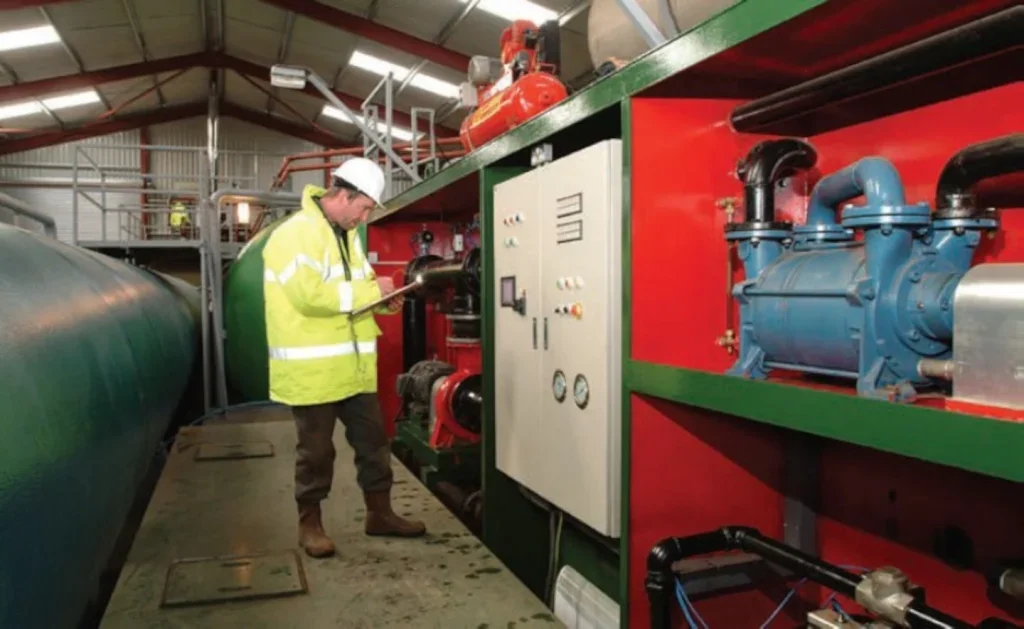
Supplying preservative-treated wood is a highly competitive business, where sales often come at the expense of quality. Market research shows that inconsistent treated wood quality and end-user guidance are made worse by low buyer awareness around verifying that wood has been treated correctly for its intended use. As a result, the fitness for purpose of treated wood is being called into question.
There is clear evidence that professional users are increasingly risk-averse and are moving to alternative, man-made materials that they perceive as more reliable.
In an age where sustainability and climate impact are key factors in choosing one product over another, treated wood should have a distinct advantage, but market perceptions about performance quality undermine its growth potential. Shifting quality perceptions cannot be tackled by an individual wood treater – it’s the collective job of the entire supply chain.
For wood treaters and those who sell preservative-treated wood, moving to thirdparty quality verification is the only credible way to build end-user confidence and grow demand. It is an objective to which the WPA and Timber Development UK (TDUK) are totally committed.

Why? Because third-party quality schemes work!
Quality refers to how well a product satisfies customer expectations, complies with industry standards and serves its purpose effectively within a given timescale. In the UK, wood treaters have historically self-certified the correct treatment of their products to industry standards. However, when mistrust in a product’s ability to meet those standards is widespread, selfcertification fails to pass the credibility test.
Evidence from the US, Canada and Scandinavia shows that independent, thirdparty verification of treated wood quality is highly credible. Third-party quality schemes have operated for decades in these markets and are recognised as the main factor in sustaining buyer confidence and demand for treated wood.
Suppliers often point to treatment plant operations within the scope of an ISO 9001 certificate as evidence they are treating wood correctly. This is not necessarily the case. ISO 9001 confirms a quality management system in place aimed at consistently producing treated wood. It does not measure or verify the fitness for purpose of a treatment process or treated wood product – that’s the role of a third-party treated wood quality assurance scheme like the WPA Benchmark.
MAKING THE CASE FOR ACCREDITATION
Here are 10 compelling reasons why thirdparty accreditation schemes, like WPA Benchmark, work. They are:
- Objective: Independent of a business and its suppliers, third-party schemes provide credibility and an unbiased approach to assessing compliance with the recognised National Standards for wood preservation. Objective, third-party verification of quality is especially important in supply chains where there are concerns about the performance of a product.
- Offer an expert perspective: The specialised experience and knowledge of independent auditors offers a fresh perspective that can help to improve control over the effectiveness of modern wood preservative formulations and their applications to wood by pressure impregnation processes.
- Efficient: Because of their expertise and deep understanding of industrial wood preservation, auditors can complete on-site assessments quickly and with minimum disruption to operations or duplication of the procedures associated with audits for environmental and management systems.
- Confidence boosting: Independent evaluation offers tangible evidence to end-users that treated wood products are fit for purpose and compliant with industry standards. Third-party quality assurance schemes in North America and Scandinavia are already successfully demonstrating the benefits, including differentiating businesses with accreditation from those without.
- Time, money, and (even) reputation saving: The fresh perspective provided by independent third-party evaluation of treatment processes and individual products can improve operating and marketing effectiveness. Experience shows that the WPA Benchmark scheme also minimises customer complaints relating to the performance of quality-assured products – saving time, costs and potential reputational damage.
- ISO 9001 quality management systems enhancing: ISO 9001 certification shows operations are consistent but does not certify wood is being treated correctly for end use. Third-party accreditation demonstrates the ability to produce compliant treated wood products in line with ISO 9001 standards, assuring customers of an unequivocal commitment to quality and customer satisfaction.
- Environmentally positive: Unlike manmade materials that consume finite raw materials and lots of energy to convert them into building products, softwood species used to make treated wood products are sustainable. Trees absorb carbon dioxide from the environment and lock it up as carbon in finished wood products.
- Nationally relevant: Accredited wood treaters are part of a major UK industryled initiative to differentiate and promote the producers of correctly treated wood from wood treaters where quality and customer satisfaction are not the priority.
- Promotionally beneficial: Accredited wood treaters have access to a free marketing support package designed to help promote the benefits of using third-party qualityassured treated wood products. For example, the WPA Benchmark support package includes use of the logo and Use Class labels for product differentiation, guidance on marketing communications, and access to co-ordinated media relations campaigns.
- Compliant with TDUK Code of Practice: Members of the TDUK supply over 80% of all the wood products sold in the UK. Its Code of Practice requires that members only sell treated wood that has been produced under a third-party quality assurance scheme for wood that has been factory-impregnated with a preservative. Third-party accreditation provides TDUK with clear evidence of compliance with this membership condition.
WHY OPT FOR WPA BENCHMARK ACCREDITATION?
WPA Benchmark is a third-party quality scheme for treated wood developed in conjunction with wood treaters, preservative suppliers and BRE. Launched in 2011, it aims to provide wood treaters with a credible way to tackle concerns about treated wood performance and verify compliance with UK industrial wood preservation standards in BS 8417 and the WPA Code of Practice.

BS 8417: Code of Practice for the Preservation of Wood defines the minimum levels of preservative treatment necessary to ensure the durability of wood in specific end-uses. However, BS 8417 does not provide instruction on how these critical minimum requirements are to be achieved – it points to the WPA Code of Practice: Industrial Wood Preservation to provide the essential guidance in achieving this performance benchmark.
The WPA Benchmark third-party quality scheme operates on the principle that wood consistently treated according to the WPA Code of Practice is a durable material exhibiting the minimum penetration and retention requirements for the relevant enduse and service life.
There are two elements to the WPA Benchmark scheme:
- Approved treaters: Accreditation of a wood treater’s operations.
- Approved products: Quality compliance of a specific treated wood product or range of products where performance expectations are a high priority for customers, for example, ground contact products.
Only WPA Benchmark-approved treaters can be certificated as producers of WPA Benchmark-approved products.
IN SUMMARY
Given the increasing appetite for sustainable materials like wood, the potential to grow demand for treated wood is significant. Yet, professional users increasingly put their trust in non-sustainable man-made materials for some outdoor applications that they perceive to be more reliable than wood. The WPA believes it is evident that moving to thirdparty quality accreditation is the only credible way to build end-user confidence and grow demand. Accreditation is a clear signpost of quality and performance in treated wood’s battle for market share.





